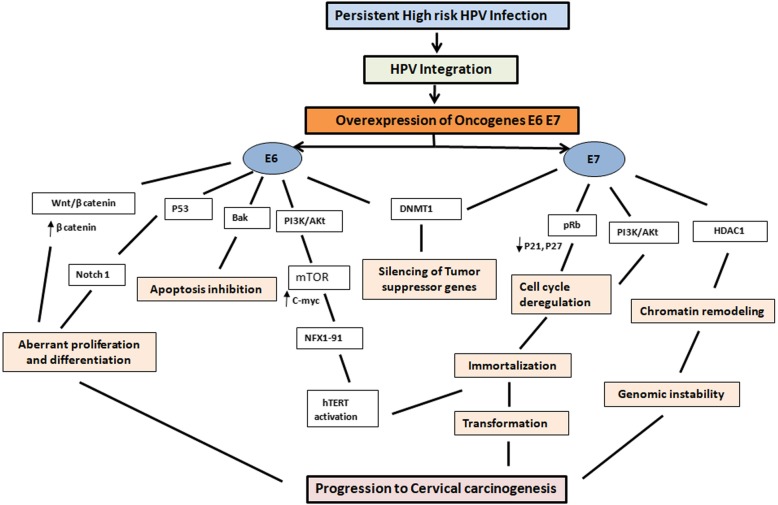Fig. 7.
Molecular events in progression to cervical carcinogenesis. Persistent infection with high risk HPV leads to integration of HPV into the host genome, leading to overexpression of oncogenes E6 And E7. Interaction of Е7 with pRb protein leads to aberrant initiation of S-phase, release of E2F transcription factor that triggers the expression of cyclins and CDK inhibitors p21 and p27, altering the integrity of cell cycle thereby contributing to cellular immortalization and transformation. Е6 targets р53 for proteasomal degradation leading to inhibition of apoptosis and DNA repair. E6 activates PI3K/Akt pathway, interacts with cellular proteins NFX1 and induces activation of hTERT leading to immortalization and transformation. The interaction of both onoproteins with DNMTs leads to aberrant methylation causing silencing of tumor suppressor genes. E7 interaction with HDACs causes chromosome remodeling and genome instability. Thus, the cross interaction of E6 and E7 with various pathways plays a key role in progression to carcinogenesis

